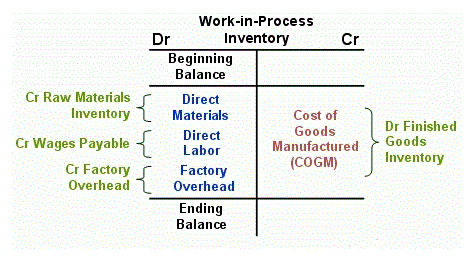
Positive working capital is when a company has more current assets than current liabilities, meaning that the company can fully cover its short-term liabilities as they come due in the next 12 months. Positive working capital is a sign of financial strength; however, having an excessive amount of working capital for a long time might indicate that the company is not managing its assets effectively. The NWC metric is often calculated to determine the effect that a company’s operations had on its free cash flow (FCF). While each component—inventory, accounts receivable, and accounts payable—is important individually, collectively, the items comprise the operating cycle for a business and thus must be analyzed both together and individually. One common financial ratio used to measure working capital is the current ratio, a metric designed to provide a measure of a company’s liquidity risk. The formula to calculate working capital—at its simplest—equals the difference between current assets and current liabilities.
- Business executives usually aim for a positive net working capital, where current assets exceed current liabilities.
- However, if working capital stays negative for an extended period, it can indicate that the company is struggling to make ends meet and may need to borrow money or find another way to finance their working capital.
- This article explores the key drivers behind changes in working capital and their implications for businesses striving to maintain financial stability and sustainable growth.
- Cap rates, which reflect both NOI and property value, can be useful for comparing properties and assessing whether a deal looks promising.
- Briefly, an increase in net working capital (NWC) is an outflow of cash, while a decrease in net working capital (NWC) is an inflow of cash.
- As a general rule, the more current assets a company has on its balance sheet relative to its current liabilities, the lower its liquidity risk (and the better off it’ll be).
- The suppliers, who haven’t yet been paid, are unwilling to provide additional credit or demand even less favorable terms.
How changes in working capital impacts cash flow
The net working capital (NWC) metric is different from the traditional working capital metric because non-operating current assets and current liabilities are excluded from the calculation. The current ratio is calculated by dividing a company’s current assets by its current liabilities. The formula to calculate the working capital ratio divides a company’s current https://www.bookstime.com/ assets by its current liabilities. The working capital of a company—the difference between operating assets and operating liabilities—is used to fund day-to-day operations and meet short-term obligations. In financial accounting, working capital is a specific subset of balance sheet items and is calculated by subtracting current liabilities from current assets.

Working Capital: Formula, Components, and Limitations
- Yes, technically capital lease liability would be considered more like short-term debt than an operating liability like accounts payable.
- By calculating the change in working capital, you can better understand your company’s capital cycle and strategize ways to reduce it, either by collecting receivables sooner or, possibly, by delaying accounts payable.
- The Change in Working Capital could be positive or negative, and it will increase or reduce the company’s Cash Flow (and Unlevered Free Cash Flow, Free Cash Flow, and so on) depending on its sign.
- However, falling FCF trends, especially FCF trends that are very different compared to earnings and sales trends, indicate a higher likelihood of negative price performance in the future.
- As a result, free cash flow can seem to indicate a dramatic short-term change in a company’s finances that would not appear in other measures of financial health.
- If FCF + CapEx were still upwardly trending, this scenario could be a good thing for the stock’s value.
Chartered accountant Michael Brown is the founder and CEO of Double Entry Bookkeeping. He has worked as an accountant and consultant for more than 25 years and has built financial models for all types of industries. He has been the CFO or controller of both small and medium sized companies and has run small businesses of his own.
- It doesn’t matter where they go as long as they affect Cash Flow from Operations correctly.
- Common examples of current assets include cash, accounts receivable, and inventory.
- The textbook definition of working capital is defined as current assets minus current liabilities.
- This will happen when either current assets or current liabilities increase or decrease in value.
- And because working capital doesn’t appear on the income statement, it doesn’t directly affect earnings or operating profit—the measures that most commonly influence compensation.
- One common financial ratio used to measure working capital is the current ratio, a metric designed to provide a measure of a company’s liquidity risk.
- In this perfect storm, the retailer doesn’t have the funds to replenish the inventory flying off the shelves because it hasn’t collected enough cash from customers.
Positive Working Capital

Working capital represents the difference between a firm’s current assets and current liabilities. Working capital, also called net working capital, is the amount of money a company has available to pay its short-term expenses. An increase change in net working capital cash flow in an operating current asset (e.g. accounts receivable) from one period to the next represents a “use” of cash, while an increase in an operating current liability (e.g. accounts payable) is a “source” of cash (and vice versa).
Understanding Changes in Working Capital and Its Impact on Cash Flow

As a business owner, it’s important to calculate working capital and changes in working capital from one accounting period to another to clearly assess your company’s operational efficiency. Lenders will often look at changes in working capital when assessing a company’s management style and operational efficiency. If the change in working capital is negative, it means that the change in the current operating assets has increased more than the current operating liabilities. Change in working capital is the change in the net working capital of the company from one accounting period to the next.
Accept Payments
Moreover, the process of improving working capital can also highlight opportunities in other areas, such as operations, supply-chain management, procurement, sales, and finance. This indicates the company lacks the short-term resources to pay its debts and must find ways to meet its short-term obligations. However, a short period of negative working capital may not be an issue depending on the company’s stage in its business life cycle and its ability to generate cash quickly. It shows how efficiently a company manages its short-term resources to meet its operational needs. Positive change indicates improved liquidity, while negative change may signal financial difficulties. One of the most important distinctions to make when calculating this metric is the difference between current (short-term) and long-term assets and liabilities.
What Impacts Can Various Changes in Working Capital Have?
- Companies with significant working capital considerations must carefully and actively manage working capital to avoid inefficiencies and possible liquidity problems.
- The change in NWC is calculated by subtracting the current period NWC balance from the prior period NWC balance.
- Change in net working capital is an important indicator of a company’s financial performance and liquidity over time.
- A better definition is Current Operational Assets minus Current Operational Liabilities, which means you exclude items like Cash, Debt, and Financial Investments.
- Interest payments are excluded from the generally accepted definition of free cash flow.
- You calculate working capital by subtracting current liabilities from current assets, providing insight into a company’s ability to meet its short-term obligations and fund ongoing operations.
- NWC is frequently used by accountants and business owners to swiftly evaluate the financial standing of a firm at any time.
The issue, however, is that an increasing accounts receivable balance implies the company’s cash collection processes might be inefficient, and a rising inventory balance means more inventory is piling up (and not sold). In the final part of our exercise, we’ll calculate how the company’s net working capital (NWC) impacted its free cash flow (FCF), which is determined by the change in NWC. The rationale for subtracting the current period NWC from the prior period NWC, instead of the other way around, is to understand the impact on free cash flow (FCF) in the given period. Net working capital, often abbreviated as “NWC”, is a financial metric used to evaluate a company’s near-term liquidity risk. Imagine that in addition to buying too much inventory, the retailer is lenient with payment terms to its own customers (perhaps to stand out from the competition). This extends the time cash is tied up and adds a layer of uncertainty and risk around collection.
